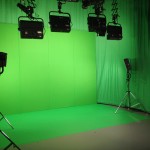
Bigfoot. UFOs. The Loch Ness Monster. All common myths that, despite countless attempts to debunk them, continue to live on.
There are several common myths about creating a “professional” video that similarly refuse to die. Let’s take a look at a few and see if we can finally put them to rest.
“Quality Video Production is Complicated and Expensive”
I can understand why this is a prevailing misconception of video production. It’s true that once upon a time, in order to produce anything with even mildly impressive production value, companies had to spend an arm and a leg to hire professionals with their own expensive equipment to produce, shoot, and edit a video for them. And then their other arm and leg would be spent paying other companies to distribute their video. So many of these expensive barriers have been removed by the advent of affordable “prosumer” video equipment (or even camera phones that shoot HD video) that allows for quality video production at the fraction of the cost of ten years ago.
And, with popular and easy-to-use video distribution platforms like YouTube and Vimeo, the ability to get your video to your audience now costs little to nothing. There are still very legitimate reasons to hire professionals and make use of better equipment, but quality video production only has to be complicated or expensive if you want it to be.
“Using a Green Screen Will Automatically Make Your Video Professional”
I have encountered this myth several times in recent months and have discouraged it each time: the idea that your interview or video shoot will automatically be more “professional” if you use a green screen to replace your background in post-production. This misconception directly relates to the first myth. While the use of green screen isn’t necessarily wrong in all circumstances, your production will automatically become more complicated and more expensive by the use of green screen. More equipment, more lights, and more setup time will be required in order to pull this effect off. Once shot, you’ll need to find an artificially created background that looks like it belongs behind your subject. Do you know what background best fits behind your subject? The background that actually existed behind your subject when you shot the interview! You also have to ensure that none of the green of the screen has bounced onto your subject (a common and often unavoidable downside).
My advice? Skip the green screen and take a few minutes to find a practical and engaging background for your subject. Even something vaguely dull can be made to look interesting with the proper use of lights and done in half the time as a green screen. Remember: the background is in the background for a reason! The last thing you want is for your viewer to be distracted from your subject, wondering if what is in the background is real or green screen.
“A Good Interview Has to be Scripted in Order to be Professional”
 I can certainly understand this myth. Not everyone feels completely comfortable being interviewed on camera (myself included), and many of our producers think that they’ll be able to eliminate or reduce their nervousness and come across as more professional by completely scripting their interview and memorizing it (or worse) reading it off of a teleprompter. This is a mistake. One of our key core values at 12 Stars Media is the need to be genuine in all of our communication. Unless you are a professional actor or very comfortable with a teleprompter, your viewers will likely be able to tell whether you are simply reciting a script from memory or reading a from a prompter. This creates a disconnect.Your viewer will no longer feel as if you’re conversing with them, but simply talking at them.
I can certainly understand this myth. Not everyone feels completely comfortable being interviewed on camera (myself included), and many of our producers think that they’ll be able to eliminate or reduce their nervousness and come across as more professional by completely scripting their interview and memorizing it (or worse) reading it off of a teleprompter. This is a mistake. One of our key core values at 12 Stars Media is the need to be genuine in all of our communication. Unless you are a professional actor or very comfortable with a teleprompter, your viewers will likely be able to tell whether you are simply reciting a script from memory or reading a from a prompter. This creates a disconnect.Your viewer will no longer feel as if you’re conversing with them, but simply talking at them.
I do understand that there may be times, especially with corporate communication, where you need to be very careful with your choice of words and a typical interview won’t work for you, but in most cases, your message will be much better served by simply responding to the right kind of questions in a genuine and conversation interview setting. Sure, there may be flubs along the way, but that’s common in our everyday conversations. As a viewer, I am much more inclined to listen to and connect with someone that comes across as real and genuine, flubs and all.
Remember, a “professional” video is one that clearly communicates your message. Don’t let these common video myths stand in the way of that. A video with a muddled and ineffective message, due to unnecessary add-ons is not professional.
What are some other video myths that you have encountered? Share them with me.
This article was syndicated from Business 2 Community: Why a Green Screen Does Not Equal Professionalism and Other Myths of Video Production
More Digital & Social articles from Business 2 Community:




